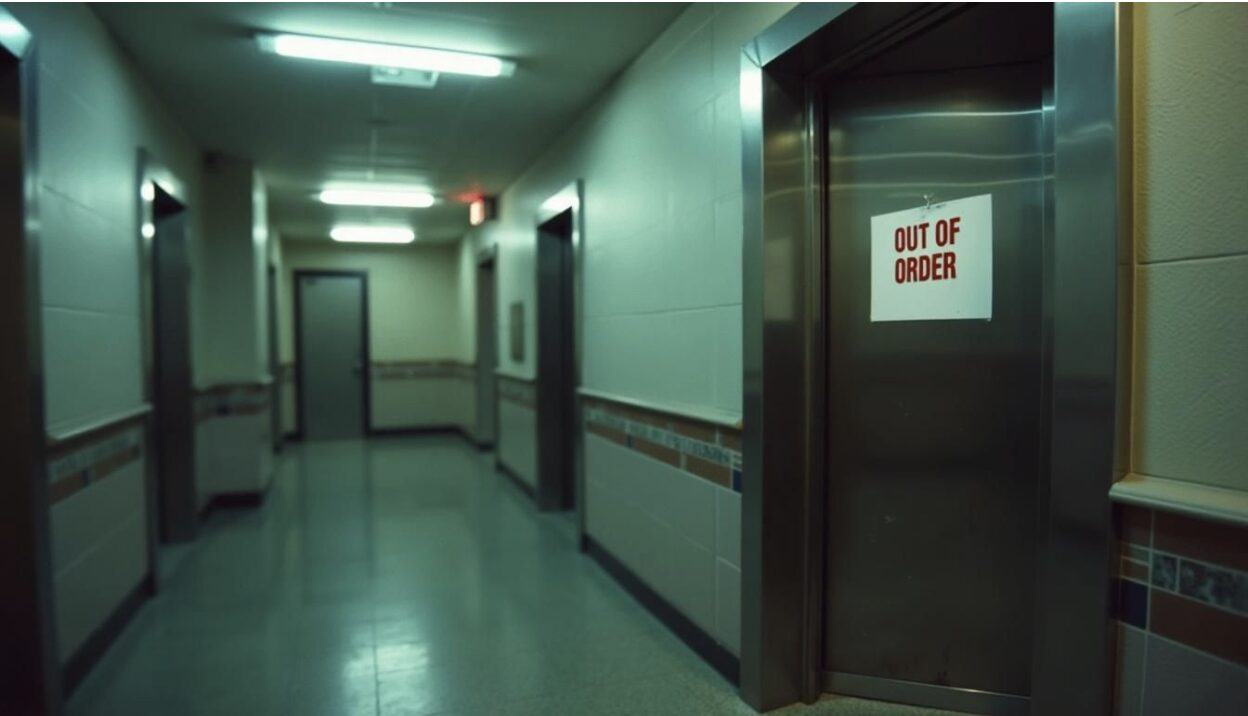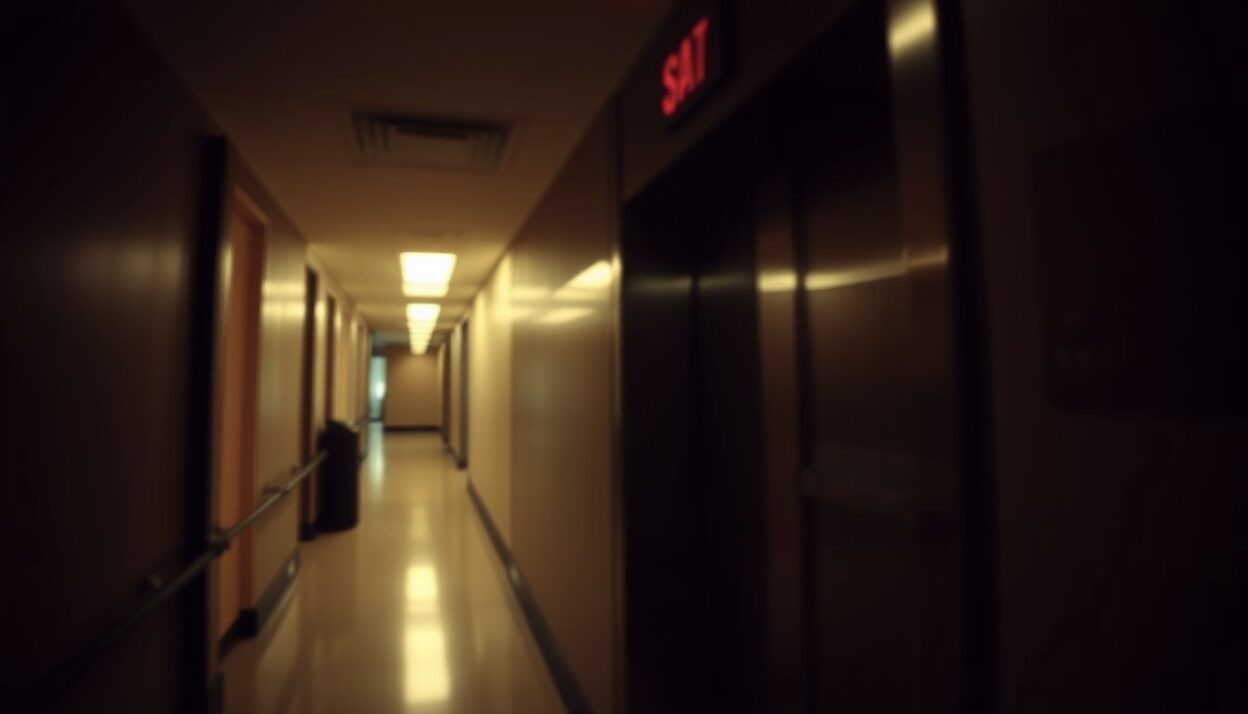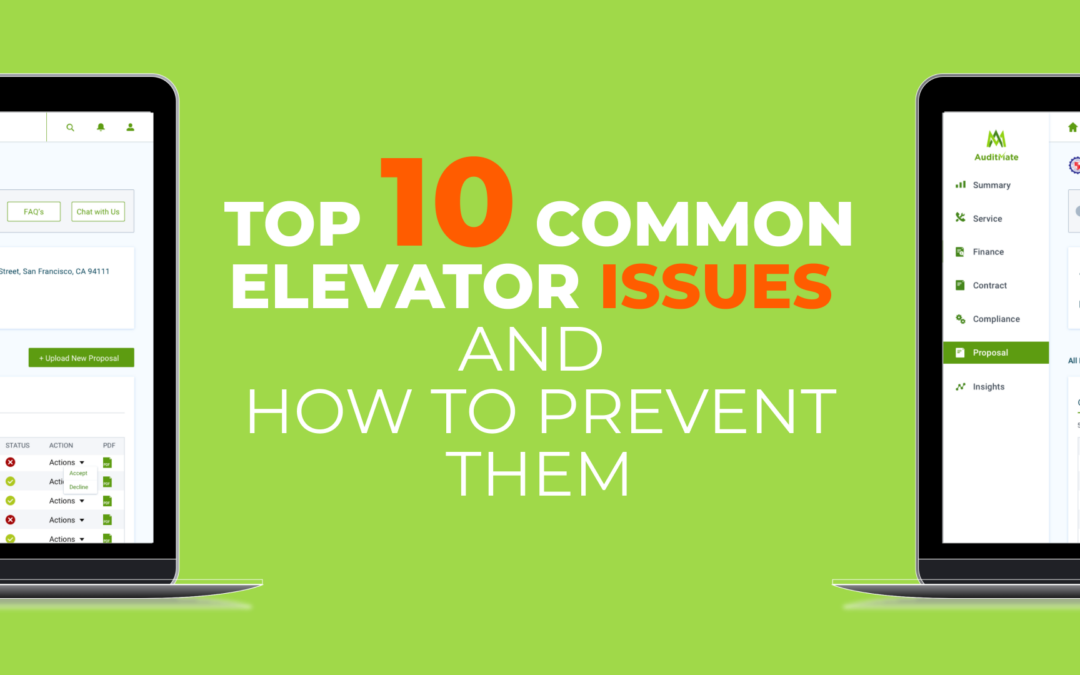Your elevator is stuck again. Elevators make life easier in tall buildings. This article will show how to fix common elevator problems. Keep reading to learn more.
Top 10 Elevator Problems
Elevators often face issues that can frustrate users and challenge building owners. From unresponsive buttons to alarming noises, these top problems highlight the need for proper upkeep and safety measures in buildings.

Unresponsive Elevator
A stuck elevator can happen for many reasons. It could be due to a power outage or a problem in the control system. Sometimes, mechanical issues are to blame. The first steps are simple: check if the power supply is on and look at the control panel for any error codes.
Regular checks and maintenance can keep elevators running smoothly.
To fix this problem, restore power if it’s out. Then, make sure all mechanical parts work right. This helps avoid future troubles like getting stuck again or other malfunctions. Keeping elevators well-ventilated also prevents them from breaking down.
Jerky or Slow Movements
Moving from unresponsive elevators, let’s talk about jerky or slow movements. Many things can cause this, but the easy answer is that maintenance is not adequate, be that lubrication, oil levels, and temperature range on hydraulic units, brushes, selectors, and power fluctuations on traction units. Inspecting elevators often helps find these troubles early on. Adjustments and repairs should happen as needed to keep everything smooth and fast.
Unusual Noises and Vibrations
Elevators can start making strange sounds like rattling, grinding, or squeaking. These noises often mean parts are not lined up right, something is loose, or they need oil. Worn-out bearings and suspension system troubles can also make an elevator noisy.
To prevent these problems, elevators should be checked and fixed regularly by experts. They look for loose bolts and other issues to keep everything running smoothly. A good check-up also keeps the elevator quiet and safe for everyone.
Door Malfunctions
Door malfunctions are common elevator issues. Misaligned sensors, mechanical faults, and worn-out rollers often cause these problems. Regular checks and calibration of door sensors and mechanisms can help prevent them.
Also, a faulty door operator system might be to blame.
The doors have many moving parts that require regular adjustment, replacement, and lubrication. When done properly and at the correct intervals, the door equipment should run smoothly and be problem-free.
Improper Leveling
From issues with doors not operating right, we move to a problem that can affect how safe and smooth an elevator feels: improper leveling. This happens when the elevator fails to line up exactly with the floor at a stop.
Causes include floor veins not being set properly, worn brushes on generators, and electronic drives not being adjusted properly on newer equipment. Load-weighing devices can also fail. On hydraulic units, valve adjustments and oil temperature fluctuations can cause problems. Proper expertise is needed to make these adjustments.
By staying on top of these tasks, you help avoid bigger issues down the road.
Electrical Failures
Electrical failures in elevators often lead to big problems. Power outages, tripped circuit breakers, and faulty wiring can stall elevators.
This puts safety at risk. To fix this, regular checks by certified technicians are a must.
Safety systems and sensors should not fail. If they do, it’s a serious danger to everyone using the elevator. Certified professionals know how to handle these issues best.
Regular inspections ensure elevator safety and functionality.
Overheating Components
Moving from electrical failures, we see that overheating components are also a big problem. Hydraulic elevators are very susceptible to heat and cold because the viscosity of the oil changes as the temperature changes due to high use or poor AC or Heat in the equipment room or shaft.
It’s risky because it can make the elevator stop working right or even be unsafe.
To prevent this, building owners must ensure good airflow for the elevator parts and check the elevator often to catch any issues early. Regular checks help determine if something is about to overheat before it causes bigger problems or safety risks. Also, many devices can be added to the elevator to monitor and control temperature.
Power Outages
After discussing overheating parts, it’s crucial to talk about power outages. These events can stop elevators from working right away. The main reasons include electrical blackouts and system failures.
During a power loss, lifts may get stuck or not answer calls.
Building staff should not restore power until trained personnel have determined the location, car positioning, and occupancy. The code requires emergence communication devices in elevators, which let trapped people call for help during a blackout.
Keeping these systems in check is key to lift safety.
Wear and Tear on Cables and Pulleys
Cables and pulleys in elevators face wear and tear over time. Proper alignment and lubrication play a part in the life span of these components. Something to keep in mind is that over-lubrication is as damaging as under-lubrication. Consult the equipment manufacturer manual for the proper type of lubricant and frequency.
Visual inspection of these components as well as tracking lubrication with a check chart will keep things running smoothly.
Simple steps like these keep elevators safe and working well for a long time.
Smoke or Fire Incidents

Smoke or fire in elevators can result from electrical shorts, blown fuses, or motors overheating or burning up. These are big safety risks and can cause an elevator to stop working. It’s key to only run elevators after they have been checked and fixed.
Building owners should have trained personnel perform regular checks and follow safety rules closely. This helps avoid smoke or fire dangers in elevators. Safety comes first, always.
Preventive Measures for Elevator Maintenance
Taking care of elevators means planning regular check-ups and fixes to prevent problems before they start. Explore ways to keep elevators running smoothly.
Regular Inspections and Servicing
Regular inspections and servicing are key to keeping elevators running smoothly. They help prevent many common problems.
Here’s how regular checks make a difference:
- Timely repairs stop small issues from getting big. This means an elevator won’t suddenly break down.
- Upgrades keep the system up-to-date. Older parts can make an elevator slow or unsafe.
- Checking door mechanical and electronic devices ensures that doors work properly, keeping people safe when they get on and off.
- Regularly check spot wear and tear on cables and pulleys early on. Replacing these parts before they fail keeps everyone safe.
- Inspections include looking for signs of overheating in electrical components. Fixing these problems early prevents bigger issues.
- Servicing follows a schedule, so nothing is missed. This planned approach catches potential failures before they happen.
- Safety inspections focus on keeping passengers safe at all times.
- Maintenance checks improve the efficiency and speed of the elevator, so it runs better every day.
In short, staying on top of elevator upkeep through regular inspections makes elevators safer and more reliable for everyone who uses them.
Updating Outdated Systems
Upgrading old elevator systems is a key move for safety and efficiency. Old tech can lead to more breakdowns and dangers. By choosing the right updates, buildings can save money in the long run.
Newer systems use less power and break down less often. This means fewer repairs.
Optimal maintenance involves seven cycles to minimize costs.
Making these changes helps avoid accidents, makes elevators faster and more reliable, and meets new safety rules. By keeping up with tech, building owners cut risks and improve service.
Implementing a Regular Cleaning Schedule
After updating old systems, it’s time to focus on keeping elevators clean. This means setting up a cleaning routine. Regular cleaning is key to keeping elevators working well.
It cuts down on breakdowns and makes them last longer.
A good plan includes checking and tidying up parts like doors and cables often. This can stop small problems from getting bigger. Having pros do these tasks ensures everything runs smoothly.
They know how to keep your elevator in top shape, boosting its performance over time.
Training for Emergency Situations
Training for emergency situations is key. It helps people act fast if something goes wrong with the elevator. Everyone should know safety steps and how to use equipment right. This makes sure they can handle smoke, fire, or power cuts safely.
Teach staff to check elevators often, using tools like the Weibull distribution. This helps find problems early. Aim for a maintenance reliability score of 0.83 over seven cycles to stop issues before they start.
Keeping everyone safe is the goal.
Conclusion
Elevators often face issues like slow rides, strange noises, and door problems. Keeping them in good shape is key. Regular checks and fixing things early help a lot. AuditMate offers a great way to handle these challenges.
It checks your elevators with smart tools and keeps track of repairs.
Reach out to AuditMate for easy elevator care.
FAQs
1. What are some common elevator issues?
Common elevator issues can include doors not closing properly, strange noises during operation, uneven leveling with the floor, and slow response times.
2. How can I prevent these elevator problems?
Preventing elevator problems often involves regular maintenance checks, timely repairs when issues arise, and ensuring the system is not overloaded beyond its capacity.
3. Are there any signs to look out for that might indicate an issue with my elevator?
Signs of potential elevator issues could be frequent breakdowns or stoppages, unusual vibrations or jerking movements during rides, and a significant increase in energy consumption.
4. Can all types of elevators experience these common issues?
Yes! Regardless of their type or model – all elevators are susceptible to these common problems if not properly maintained or regularly inspected.

